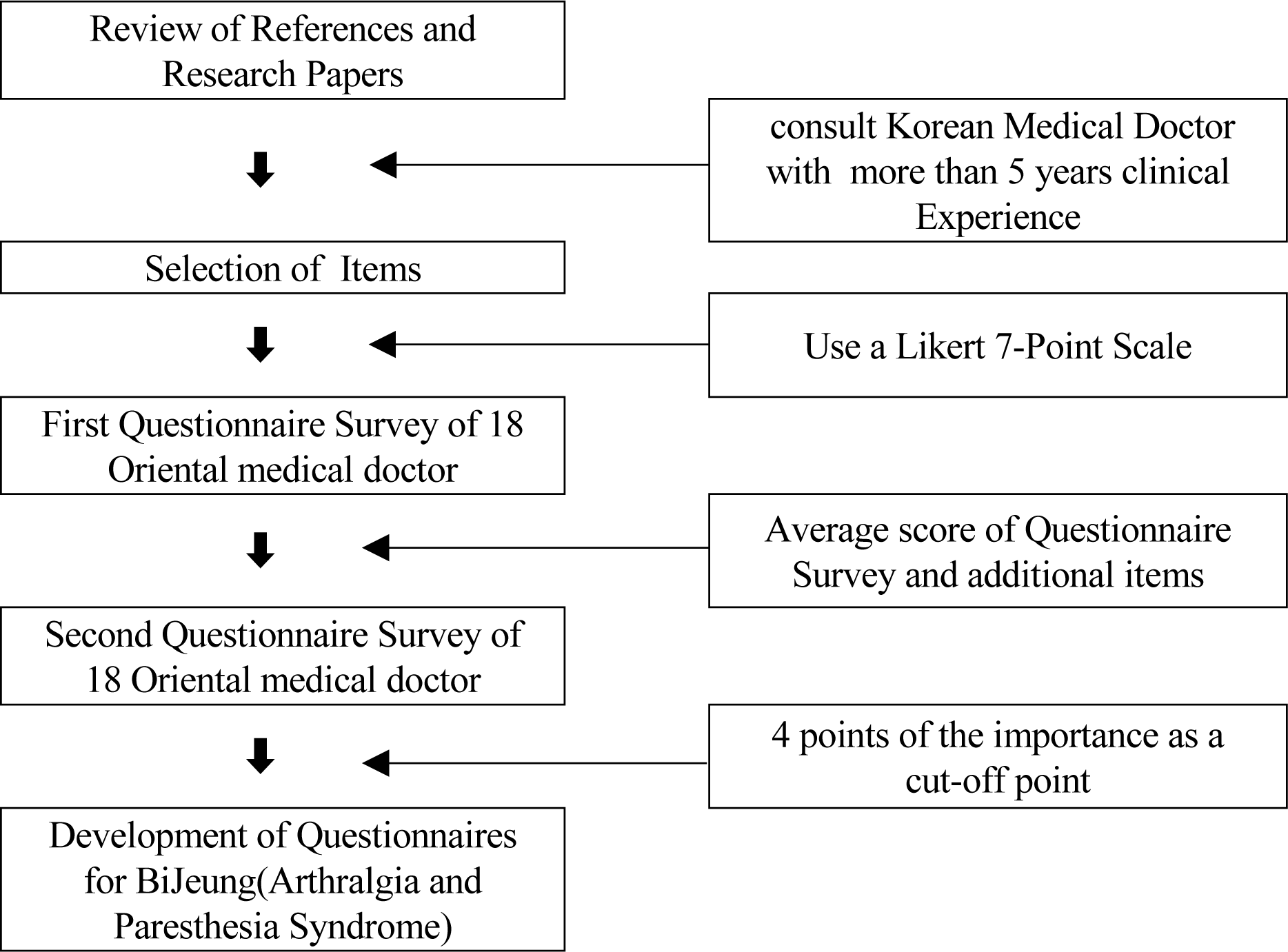References
1. Kim KS, Park JK, Kim DS. Status and Characteristics of Occurrence of Work-related Musculoskeletal Disorders. Journal of the Ergonomics Society of Korea 2010;29(4):405–422.
2. Han YJ. Management of Acute Pain. Korean journal of pain 1992;5(1):9–16.
3. Chung SK. The Literatural Study on Arthralgia Syndrome. Journal of Korean oriental medical society 1995;16(1):9–20.
4. Yang YG. Hwangjenaegyeongsomunnyeokseok Seoul: Seongbosa; 1980.
5. Jang JG. Geumgweyoryak Beijing: Inminwisaengchulpansa; 1989.
6. Jang R. Jangssiuitong Shanxi: Sanseogwahakgisulchulpansa; 2010.
7. Jang GB. Gyeongakjeonseo Seoul: Daeseongchulpansa; 1993.
8. Jin GM. Jeunginmaekchi Taipei: Seonpungchulpansa; 1979.
9. Chung SK, Kim SS, Shin HD. Bijeungui Bullyuwa Chiryoe Gwanhan Gochal. Journal of Oriental Physio Therapics 1992;2(1):181–190.
10. Hong SS, Oh MS, Youn IJ. A Study of Literature Review on Tong Bi. The Journal of Daejeon Oriental Medicine 2005;14(1):187–200.
11. Jang DH, Jang JY, Keum KS, Park K. A Study on the Bi Lon of the So Moon. The Journal of Wonkwang Oriental Medicine 1996;6(1):84–124.
12. Sohn DW, Oh MS. Study of BiJeung by 18 doctors. The Journal of Daejeon Oriental Medicine 2000;9(1):595–646.
13. Park GB, Hwang CW. Sambijeungui Chibange Daehan Munheonjeok Gochal. The Journal of Daejeon Oriental Medicine 1999;7(2):453–478.
14. Jeong SH, Roh GH, Kang KS, Moon SK, Joh KH, Bae HS. Case of Treating the Paresthesia Suggested from Peripheral Neuropathy. Journal of Korean oriental medical society 2000;21(3):242–247.
15. Lee C. Pyeonjuuihagimmun Seoul: Daeseongchulpansa; 1982.
16. Heo J. Donguibogam Seoul: Donguibogamchulpansa; 2006.
17. Hasson F, Keeney S, McKenna H. Research guidelines for the Delphi survey technique. journal of Advanced Nursing 2000;32(4):1008–1015.
18. Cabral Danielle, Katz Jeffery N, Weinbatt Michael E, Ting Gladye, Avorn Jerry, Solomon Daniel H. Development and Assessment of Indicators of Rheumatoid Arthritis Severity: Results of a Delphi Panel. Arthritis & Rheumatism 2005;53(1):61–66.
19. Lee HJ, Nam SS, Lee YH. The Study of Pain and Functional Disability Scales for Low Back Pain. The Journal of Korean Acupuncture & Moxibustion Society 2002;19(2):137–148.
20. Jeon CH, Kim DJ, Kim SK, Kim DJ, Lee HM, Park HJ. Validation in the cross-cultural adaptation of the Korean version of the Oswestry Disability Index. J Kkorean Med Sci 2006;21(6):1092–7.
21. Kim DY, Lee SH, Lee HY, Lee HJ, Chang SB, Chung SK, et al. Validation of the Korean version of the Oswestry Disability Index. 2005;30(5):E123–7.
22. Roland M, Morris R. A study of the natural history of back pain. Part 1: Development of a reliable and sensitive measuer of disability in low-back pain. Spin 1983;8(2):141–4.
23. Roland M, Fairbank J. The Roland-Morris Morris Disability Questionnaire and the Oswestry Disability Questionnaire. Spine 2000;25(24):3115–24.
24. Lee H, Nicholson LL, Adams RD, Maher CG, Halaki M, Bae SS. Development and psycho-metric testing of Korean language versions of 4 neck pain and disability quenstionnaires. Spine 2006;31(16):1841–5.
25. Bae NS, Yang DH, Park YJ, Park YB, Lee SC, Oh HS. Development of questionnaires for Yol Patternization. The Journal of the Korea Institute of Oriental Medical Diagnostics 2006;10(1):98–108.
26. Cho SW, Park YJ, Park YB. Study on Correlation between Acoustic Profiles and Fatigue. The Journal of the Korea Institute of Oriental Medical Diagnostics 2010;14(1):15–35.
27. Yang DH, Park YJ, Park YB, Lee SC. Development of Questionnaires for Blood Stasis Pattern. The Journal of the Korea Institute of Oriental Medical Diagnostics 2006;10(1):141–152.
